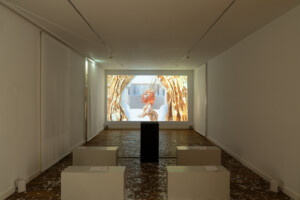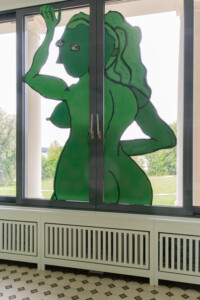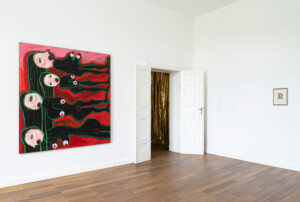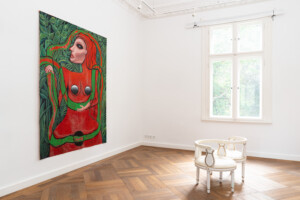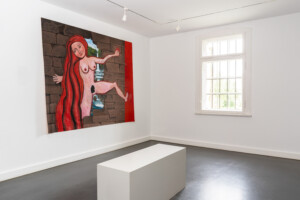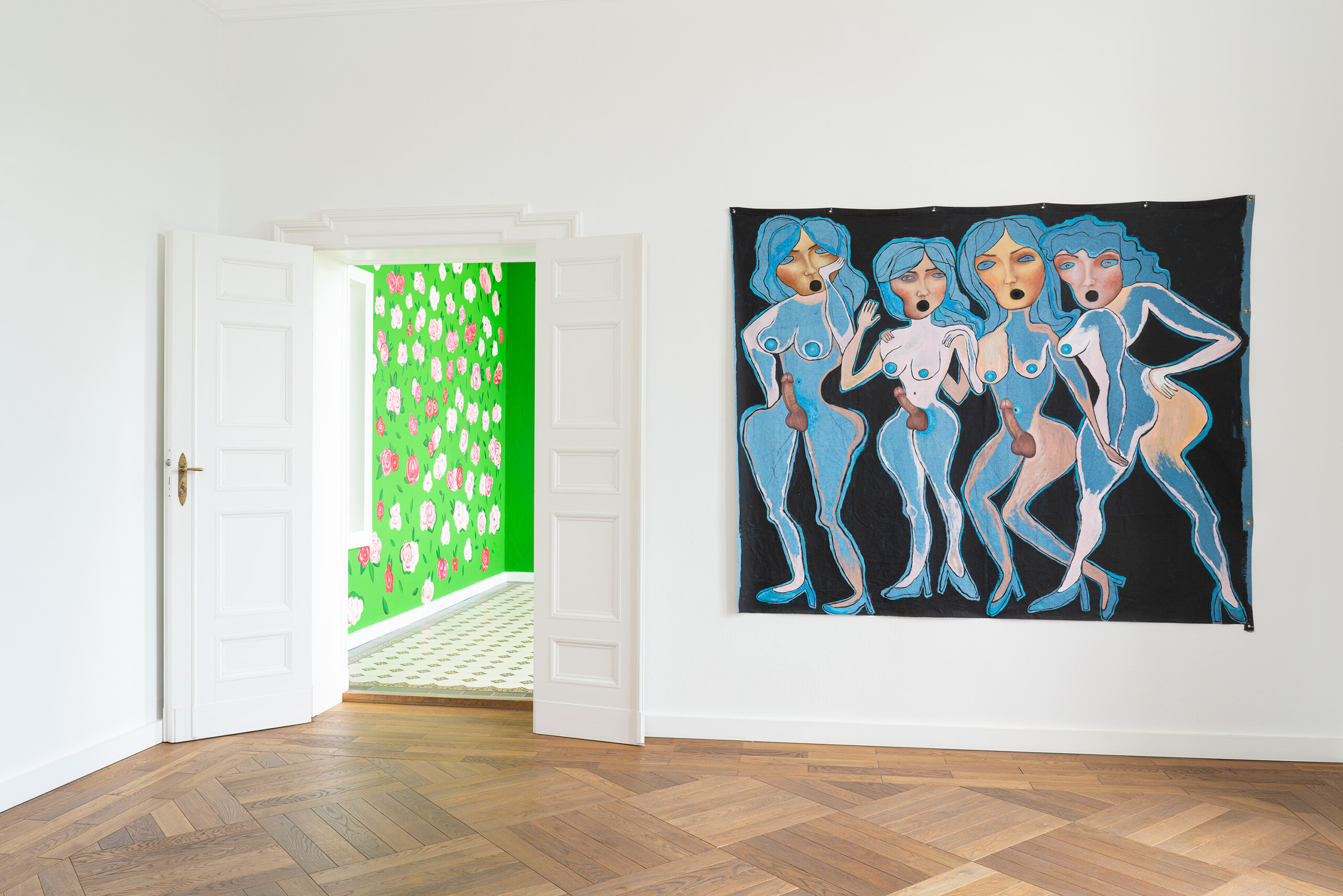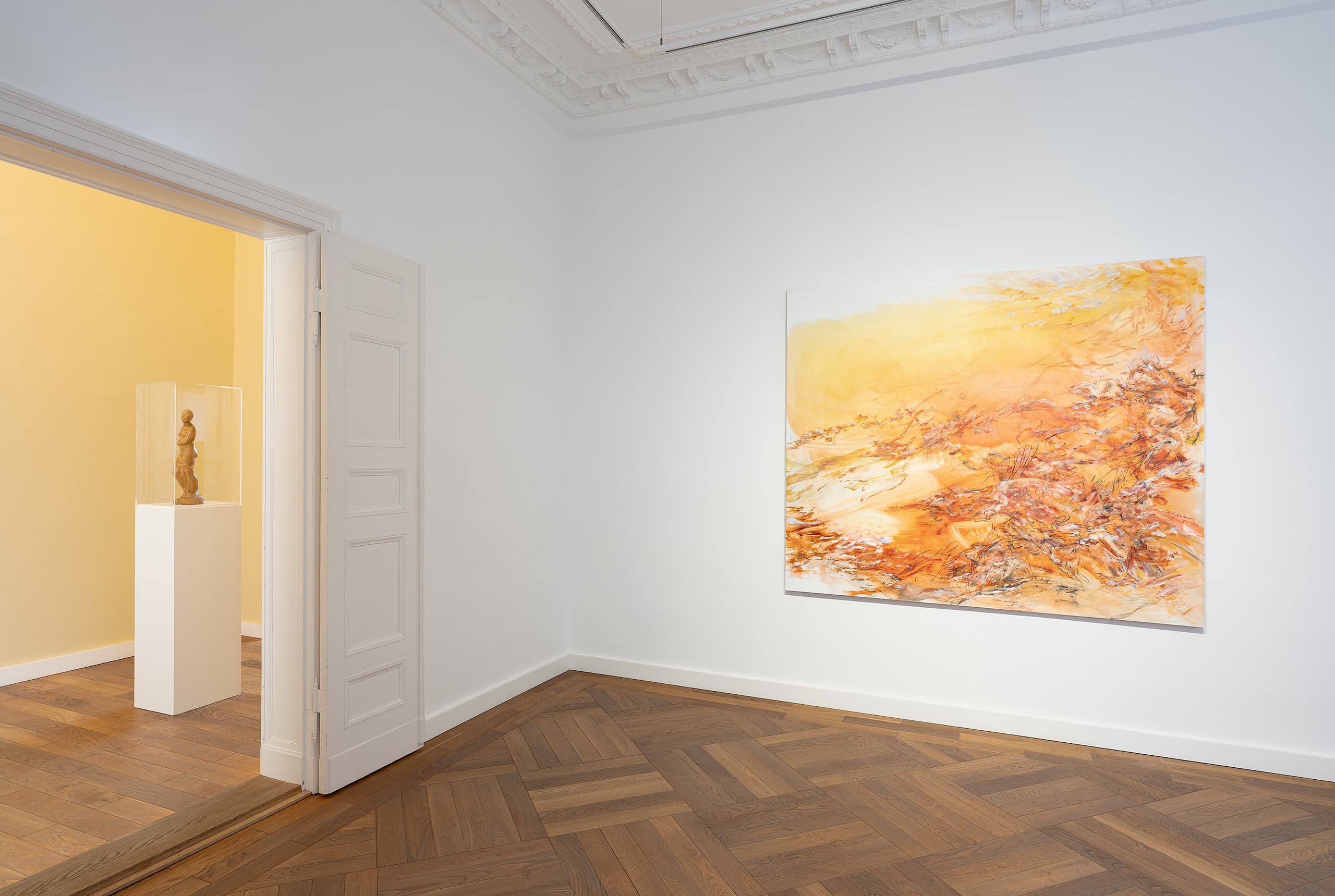The Seer and the Seen
Holy Madonna or provocative harlot – for a long time, these were the predominant images of femininity found in art. American artist Trulee Hall has also explored them in her video work “Two Tongues Duel the Corn Whores, An Opera,” which is part of this exhibition.
The opera, narrated by a beatboxer, tells the story of the tension-filled duel between the two intersecting images of femininity, the Madonna and the harlot. The battle unfolds in acts of masturbation, striptease, domestic martyrdom, and a ritual of immaculate conception. In the monologue-style narration of the storyteller, the phrase “The Seer and the Seen” is mentioned, which is the titular theme of the current exhibition.
Hall’s concerns go beyond the representation of gender and sexuality; she also delves into the relationship between subject and object, seer and seen. Who are the viewers, and who are the viewed? Is seeing an aesthetic or moral judgment, or even a voyeuristic act?
Hall works across various media, often staging her sculptures, paintings, and videos in settings reminiscent of theatrical sets. Her video works combine live recordings, computer animations, and stop-motion films created with clay figures, blurring the boundaries between the real and the fictitious.
The 45-year-old artist’s works have already been exhibited at the FRIEZE art fair in Los Angeles. The Zabludowicz Collection in London dedicated a solo exhibition to her in 2020, during which they produced the opera together. Now, Villa Schöningen is presenting her works for the first time in Germany.
The figures in Hall’s works emancipate themselves from their role as objects that exist only to be seen. This becomes even clearer in the context of the old masters with whom Hall’s works are contrasted in the current exhibition. While in Albrecht Dürer’s “The Fall of Man,” the bite of the apple leads to damnation, Trulee Hall’s interpretation of Eve already holds out the second apple for enjoyable consumption.
Her figures rise above the societal gaze assigned to them, and her works offer new patterns of interpretation for what is seen and who is seen. In her visual worlds, the relationship between the seer and the seen is not a violent one but unfolds an emancipatory potential.
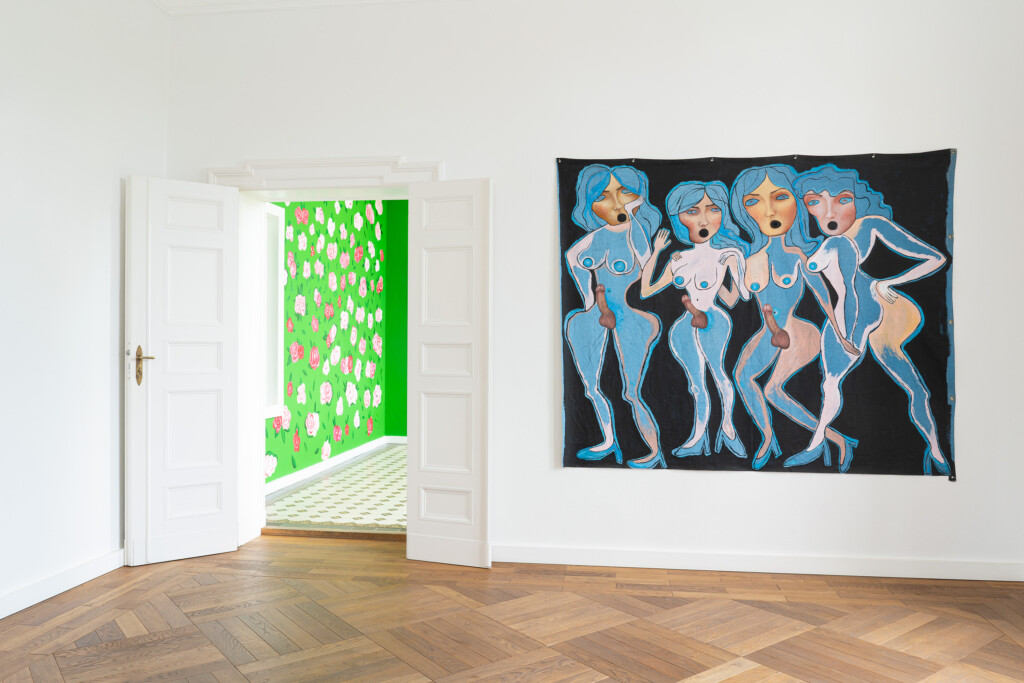 Trulee Hall, Horney Ladies (Group Effort), Rauminstallation, 2018 © Villa Schöningen, courtesy the artist and maccarone gallery. Foto: Sascha Herrmann, 2021.
Trulee Hall, Horney Ladies (Group Effort), Rauminstallation, 2018 © Villa Schöningen, courtesy the artist and maccarone gallery. Foto: Sascha Herrmann, 2021.
 Trulee Hall, Tongues Duel the Corn Whores, An Opera, Video, 2020 © Villa Schöningen, courtesy the artist and maccarone gallery. Foto: Sascha Herrmann, 2021.
Trulee Hall, Tongues Duel the Corn Whores, An Opera, Video, 2020 © Villa Schöningen, courtesy the artist and maccarone gallery. Foto: Sascha Herrmann, 2021.
 Trulee Hall, The Seen in Green, Rauminstallation, 2021 © Villa Schöningen, courtesy the artist and maccarone gallery. Foto: Sascha Herrmann, 2021.
Trulee Hall, The Seen in Green, Rauminstallation, 2021 © Villa Schöningen, courtesy the artist and maccarone gallery. Foto: Sascha Herrmann, 2021.
 Trulee Hall, Love Doll Quartette, 2020 © Villa Schöningen, courtesy the artist and maccarone gallery. Foto: Sascha Herrmann, 2021.
Trulee Hall, Love Doll Quartette, 2020 © Villa Schöningen, courtesy the artist and maccarone gallery. Foto: Sascha Herrmann, 2021.
 Trulee Hall, Lilith, 2020 © Villa Schöningen, courtesy the artist and maccarone gallery. Foto: Sascha Herrmann, 2021.
Trulee Hall, Lilith, 2020 © Villa Schöningen, courtesy the artist and maccarone gallery. Foto: Sascha Herrmann, 2021.
 Trulee Hall, Hole in the Wall, 2020 © Villa Schöningen, courtesy the artist and maccarone gallery. Foto: Sascha Herrmann, 2021.
Trulee Hall, Hole in the Wall, 2020 © Villa Schöningen, courtesy the artist and maccarone gallery. Foto: Sascha Herrmann, 2021.

